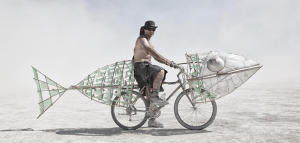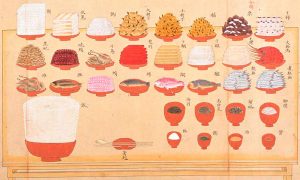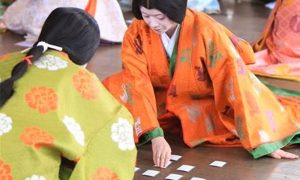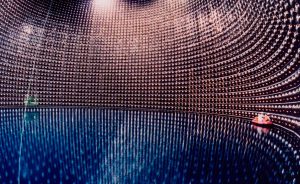Edo Sanpu 2020 consists of four art projects, inspired by four distinctive aspects of the relationship between the Netherlands and Japan (past and present). In particular: trade & transport, food & table manners, language & game and knowledge & science. All four projects will be exexuted and exhibited both in Japan and in the Netherlands.
We (Botan, Hirokichi, Jan and Hannie) got to know each other during Artist In Residency projects in the Netherlands and Japan. During multiple encounters we discussed each other’s artistic and cultural affinities and differences. More and more, we discovered that there is a bigger story to our mutual interest. The story about the exclusive relationship that the Netherlands and Japan maintained for a long time. With the means of art, we want to investigate the current relevance of that story and revitalize it.
FOUR PROJECTS

Trade and Transport
The Japanese – Dutch connection started in 1600 when a Dutch Vessel called De Liefde (Love) landed at Kuroshima, a small island in the present Oita Prefecture. It would prove to be the starting point of a long-lasting bond between the two cultures. In the very beginning the connection was merely a trade and transport relation. Gradually the two cultures also started to exchange immaterial goods and insights.
For a long time already, intercontinental trade and transport are no longer limited to ships. That’s why, in the context of Edo Sanpu 2020, we create an intercultural bicycle project. Both our countries are very well-known for their lively bike-culture. Both our countries are known for their lively cycling culture. Bicycles are being used for everyday commuting, shopping, leisure and sports. All these aspects come together in the bicycle messengers (or couriers) who nowadays have become a significant means of trade and transport; for the delivery of goods, parcels, documents, mail, medicine and food.
Decocyari
Inspired by the above history we will cycle through Japan and the Netherlands on decorated bicycles; in Japan they’re known as decocyari. In the 1970’s in Japan, youngsters used their bicycle as a way to profile themselves; to create a personal image. Currently there’s a certain decocyari revival in Japan.

Food and table manners
From the very first encounter between Japanese and Dutch, food played an important role. Before the trade negotiations started, food and drinks were served. Food is not only a way to bring people together, it is also an effective means of communication. During eating, all senses are stimulated.
Food can be considered both as a material and an immaterial heritage. It tells us a lot about the similarities and differences between the Netherlands and Japan, and about the way they form images of each other. For example, there are few Dutch who can appreciate natt? (fermented soybeans), whereas it is for many Japanese people a treat. Conversely, there are hardly any Japanese who like licorise, which by the Dutch is considered to be a delicious candy.
Noribread
In the context of Edo Sanpu 2020 we create an interdisciplinary food project with nori and bread. ??Nori is edible seaweed and is an important ingredient for many Japanese dishes. It is famous for its distinctive ‘fifth taste’ – umame – which is widely used as a flavor.
For several years now seaweed are also grown in the Netherlands and being examined for all sorts of small and large scale applications; varying from seaweed cheese to meat replacements, and from biofuel to sustainable building materials.
Bread has a long history in the Netherlands and is daily consumed by many. The Dutch language knows many sayings with bread and it is also regarded as a symbol of spiritual food.
 Language and Game
Language and Game
Speaking each others language is crucial for trading. And playing a game together is traditionally one of the easiest ways to get in touch with ‘others’. Old drawings show how people at the Dutch trading post Dejima played badminton, dice and billiards together.
Also for the exchange of art and knowledge and for everyday communication, the Dutch and the Japanese were highly dependent on language. In the 17th and 18th century there was still no international language and the two cultures initially knew hardly anything about each other. Japan founded a special College of Interpreters and on the Dutch side handy glossaries for trade talks and everyday conversations were composed. Consequently, both languages ??took over words from each other. Thus more than 300 Dutch words found their way into the Japanese language. And in Dutch, such words as japon, tsunami, judo and sushi came into use.
Karuta
Inspired by the above history we create a new karuta game. Karuta is both an educational card game and a competitive sport. The most famous version of the game consists of cards showing 100 Japanese illustrated tanka poems. The game is played by two players and a referee. In short, the referee reads a line of one of the poems and both players must then try to be the first to touch the card on which the poem in question is pictured.
 Knowledge and Science
Knowledge and Science
During the two hundred years that the Dutch were the only Europeans allowed to have trade relations with Japan, they became the country’s main source of Western knowledge and science. From the second half of the eighteenth century, when Japan turned away from its sinocentric world view, rangaku — Dutch science, ‘Hollandology’ — was actually stimulated by the authorities. Reversely, the Netherlands fulfilled a unique role in Europe, in spreading knowledge of the richness and importance of Japanese art and science; which became tremendously popular.
In his essay In Praise of Shadows (1933) the Japanese writer Junichir? Tanizaki (1886–1965) poses the intriguing statement “… how different everything would be if we in the Orient had developed our own physics and chemistry … would they not have suited our national temper better than they do? In fact our conception of physics itself, and even the principles of chemistry, would probably differ from that of Westerners“.
Performance of nature
Inspired by Tanizaki’s statement we will research an alternative way to deal with particle physics; in particular neutrino research. Neutrinos are some of the most abundant yet mysterious particles in the universe. Popularly they’re referred to as ghost particles. Like bullets through mist, they shoot through ordinary matter. Every second some 50 trillion of them fly through our bodies without us even noticing. This characteristic of neutrinos also make them extremely difficult to detect. Which is why neutrino detectors are among the most impressive instruments in science.
Super-Kamiokande is a Neutrino Detection Experiment in Japan. It’s not only one of the most elegant physics experiments in the world, but also one of the most succesful. The observatory yielded its researchers two separate Nobel Prizes in Physics; in 2002 and 2015.